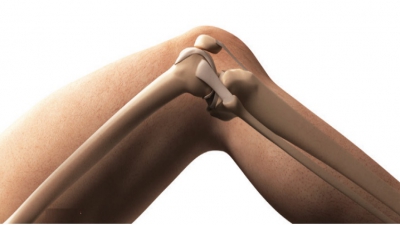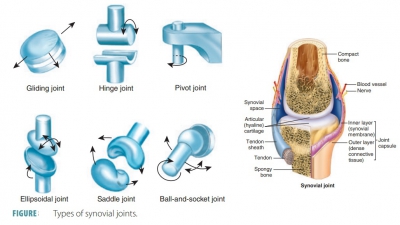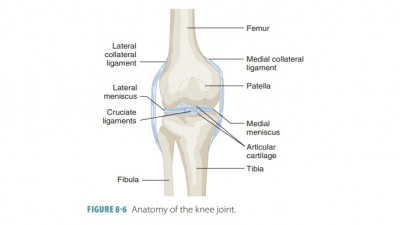Bursae and Tendon Sheaths
| Home | | Anatomy and Physiology | | Anatomy and Physiology Health Education (APHE) |Chapter: Anatomy and Physiology for Health Professionals: Support and Movement: Articulations
1. What factors are most important in stabilizing synovial joints? 2. Describe the components of a synovial joint.
Bursae and
Tendon Sheaths
The bursae and tendon sheaths
are closely related to the synovial joints. They act similar to lubricated ball
bearings, reducing friction during joint activ-ity between nearby structures. Bursae are flat fibrous sacs that have
synovial membranes lining them. They contain a thin film of synovial fluid and
are located where bones, ligaments, muscles, skin, or tendons rub together. A tendon sheath can be
understood as a lengthened bursae wrapping totally around a tendon that is
subjected to friction. They are common in areas such as the wrist, where
several tendons are tightly crowded inside narrow canals.
Joints must be stabilized to
avoid becoming dislocated during stretching and compression. Joint stability
relies on articular surface shapes, number and position of ligaments, and also
on muscle tone. Artic-ular surfaces actually play just a minor role. When they are
larger and well fitting or when sockets are deep, joint stability is greatly
improved. For example, the hip’s ball and socket joint is very stable because
of the shape of its articular surfaces.
Bones are united, and excessive
or undesirable motions are prevented by the capsules and ligaments of synovial
joints. Generally, the more ligaments that exist, the stronger the joint.
Sometimes, excessive ten-sion on the ligaments causes them to stretch, which is
a condition that remains. Ligaments stretch approx-imately 6% of their length,
until they break. When a joint is mostly braced by ligaments and this occurs,
the joint becomes highly unstable.
Muscle tendons crossing joints
are often the most important factors concerning stability. Muscle tone keeps
these tendons tense. It means that the muscle, when relaxed, has low levels of
contractile activity. This keeps muscles healthy and ready for stimulation.
Muscle tone is vital for reinforcing areas such as the foot arches and the
joints of the knees and shoul-ders. Articulations of the appendicular skeleton
are described in TABLE 8-3.

1. What
factors are most important in stabilizing synovial joints?
2.
Describe the components of a synovial joint.








